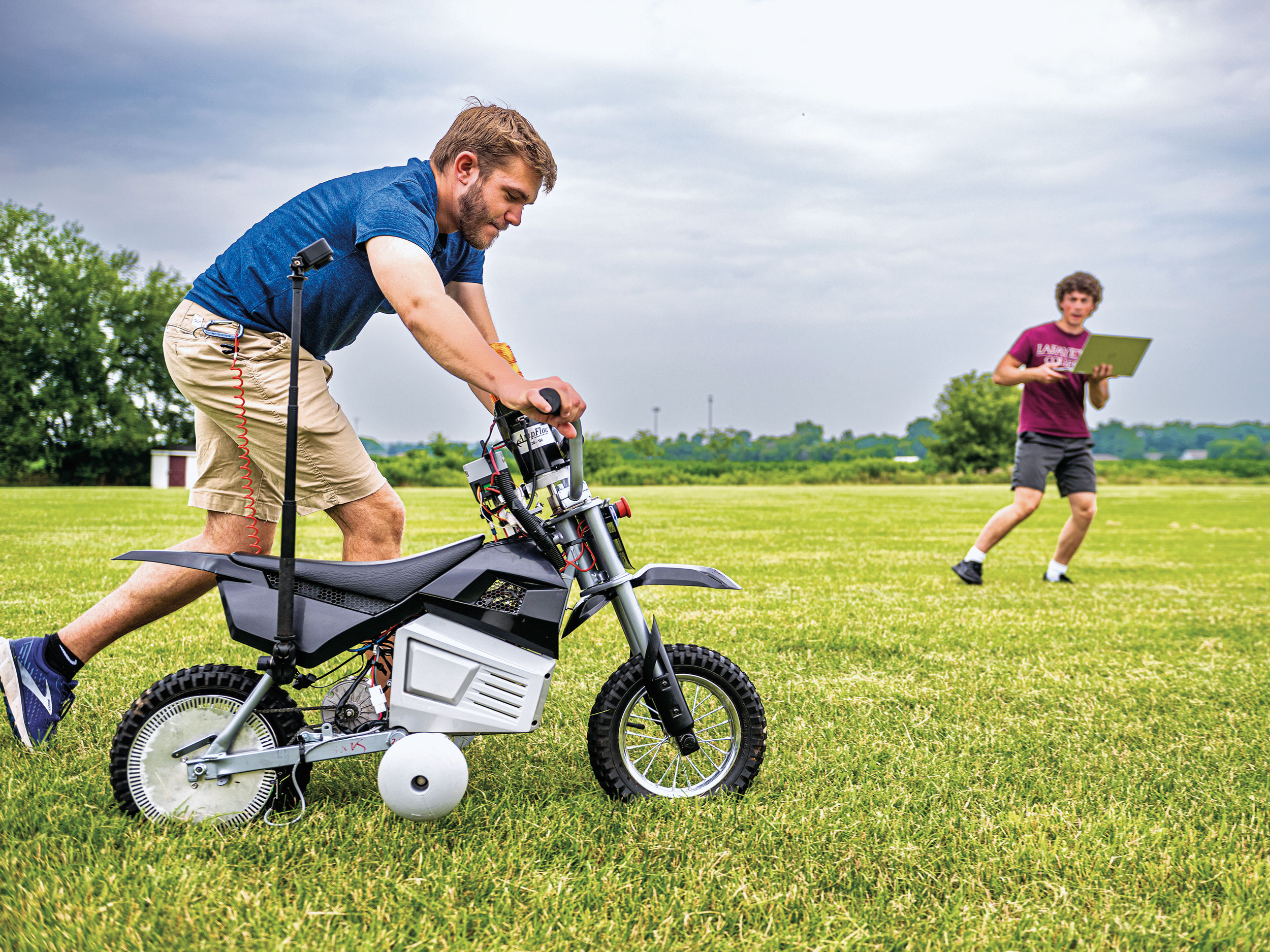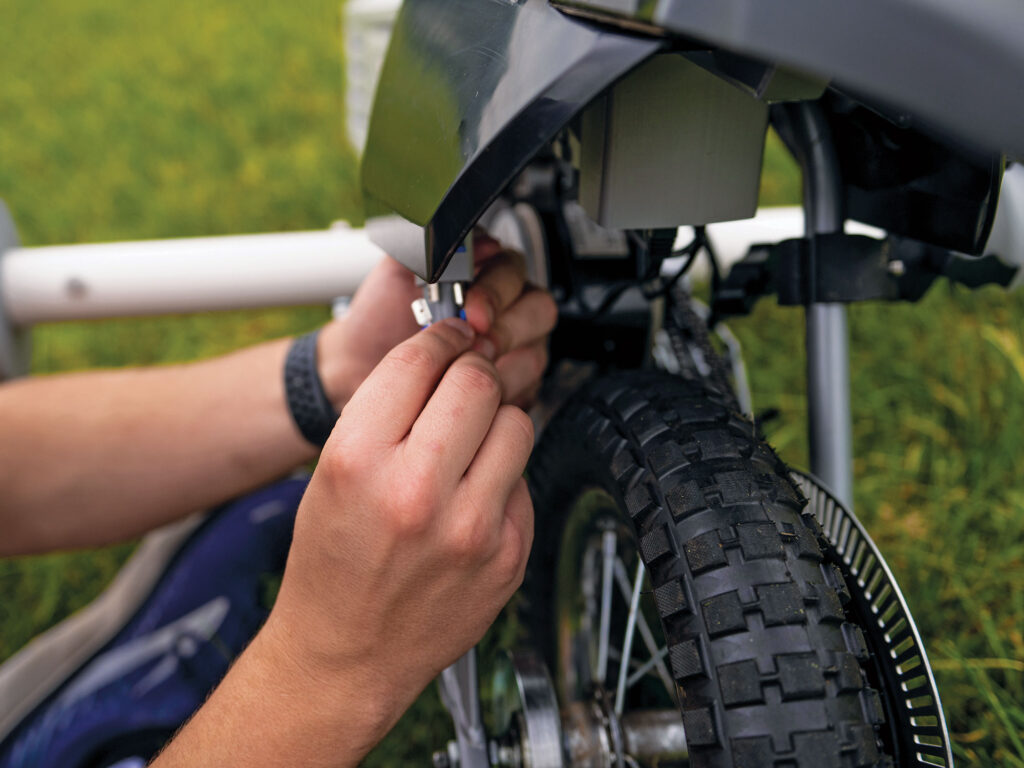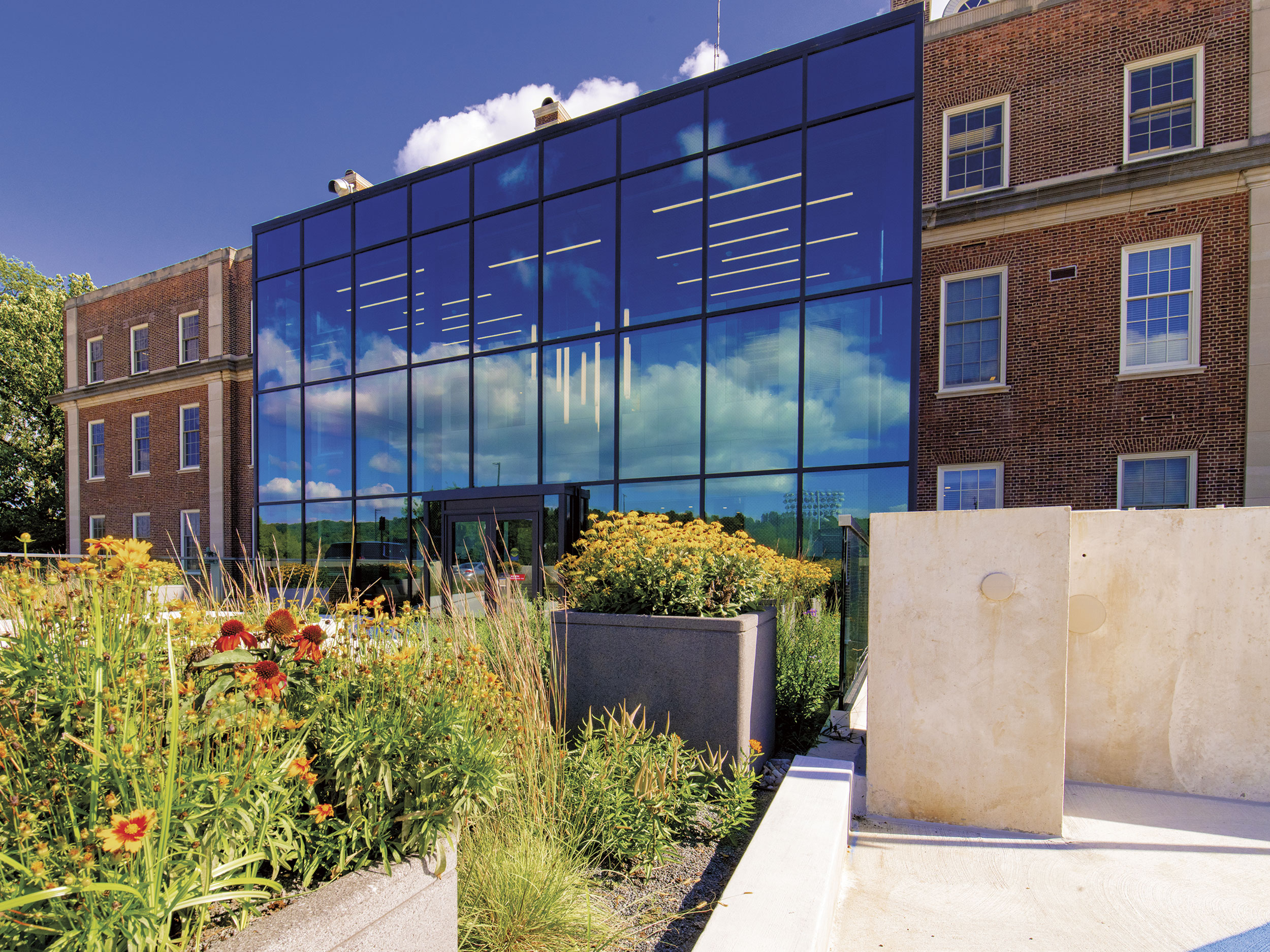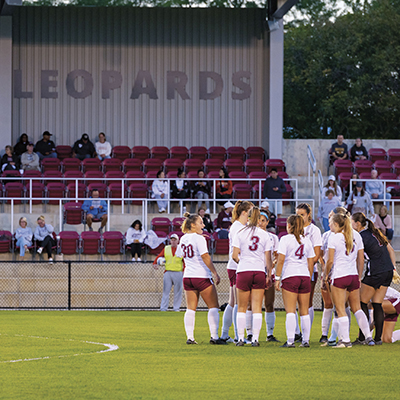Can this bike built by Lafayette engineers save lives?
Associate professor of mechanical engineering Alexander Brown and student-researchers constructed a self-driving minibike that could potentially transform motorcycle safety.

Sam Milhaven, a senior majoring in integrative engineering with a focus on robotics, gives the prototype a running start.
Photographs by Adam Atkinson
As an avid motorcyclist, Alexander Brown, associate professor of mechanical engineering, is keenly aware of the unique safety risks associated with cruising on two wheels. There are less than half as many motorbikes on the world’s roads as there are cars (600 million motorbikes to 1.4 billion cars); yet, he explains, motorcycle riders are almost 30 times more likely to die in a crash than those driving cars.
“Motorcycles are little balls of contradiction on so many levels,” Brown says. “The stark dichotomy between their mechanical simplicity and their dynamic complexity is fascinating. They have fewer wheels than a car, and they’re far less expensive to own and maintain. But they require active, continuous, and nuanced input from their rider simply to remain upright—let alone navigate tricky traffic or road conditions.”
The development of new, improved motorcycle safety systems and technology undeniably has the potential to positively impact—and save—many human lives. However, conducting the necessary research to achieve that goal is challenging. Experimenting with human drivers carries obvious risks, and using life-size bikes makes crash-testing expensive and laborious. In a perfect world, Brown explains, computer simulations would take care of most experimentation—but commercial simulation programs come with a hefty price tag and offer little flexibility for manipulating testing conditions.
Determined to find a more practical solution for testing and improving bike safety, Brown hit the research lab with five Lafayette student-researchers: Ben Arky ’24, Paris Francis ’26, Bryson Kronheim ’24, Sam Milhaven ’24, and Wenjia Li ’25. The team spent this past summer custom-building accessible simulation software and a robotic self-driving minibike.
“The models and technology we develop in my lab use free open-source software as a base, which will allow our group to do things few others can do without enormous resource investments,” Brown says. For example, they can run hybrid simulations (part hardware, part software), simulate new types of sensors used in advanced safety systems, develop innovative virtual riders of differing skill level or stature, and share their work freely with others—i.e., regulatory bodies—to understand the impact that new motorcycle safety technology might have on traffic flow and safety as a whole.
The autonomous bike will be capable of keeping itself upright and steering automatically to follow paths defined by GPS; data collected from it will allow Brown and his student-researchers to see how accurately their simulation software can replicate motorcycle behavior. “Once we have confidence in our simulation software, we can use it to tackle more complex motorcycle safety issues, like development and evaluation of Advanced Rider Assist Technology,” Brown says. “These days, premium motorcycles are hitting the market with features like adaptive cruise control and lean-sensitive anti-lock brakes. Motorcycles’ dynamic complexity makes developing this type of technology challenging, so it is a rich area for growth in the next decade as we work to make these systems work better, and more accessible and affordable.”
The research project—which was inspired by Brown’s Robotics Systems and Design course, and is supported by Lafayette’s Mechanical Engineering Department, Integrative Engineering Program, EXCEL Scholars Program, and Clare Boothe Luce & Ally Research Scholars Program—also provides invaluable experience for the students involved. “After conquering this, the students should deservedly have a lot of confidence when tackling other robot design problems,” Brown says. “They are developing a level of intellectual maturity and dexterity with the tools and methods of robotics and vehicle dynamics that I didn’t have until several years into graduate school.”
“The most rewarding thing for me is being able to take the skills and concepts we’ve learned in class, and use it to work on something hands-on that’s our own,” says Milhaven, a senior majoring in integrative engineering with a focus on robotics. “It’s being able to jump straight into research with a professor as an undergraduate. I’m making things. I’ve designed parts, installed additional wiring and circuitry, and programmed control schemes. And I didn’t have to wait until graduate school to get that experience.”
Francis, a sophomore integrative engineering major, says the experience helped her discover new possibilities for her future. “This opportunity opened my eyes to an entirely different career field,” she explains. “Having successful code, building my first finite state machine and seeing it run, seeing things work that I’ve never done before—it’s been really rewarding.”
Brown and his student-researchers plan to continue their work in the lab throughout the academic year. “We are just getting started,” Brown says. “If we can develop models that contribute to new safety systems, infrastructure, or policy, that’s a win.”





